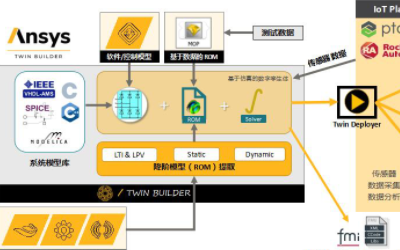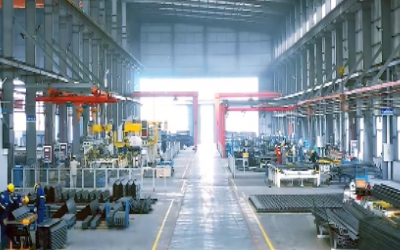China plans to dominate global production of EV batteries
As Tesla founder Elon Musk races to finish building the world’s biggest EV battery factory in the Nevada desert, China is poised to leave him in the dust.
Chinese companies plan to build a wave of battery factories that would produce nearly 160 gigawatt-hours annually by 2021, according to a report published this week by Bloomberg Intelligence.
By comparison, Tesla Inc.’s “gigafactory” will produce up to 35 gigawatt-hours of battery cells annually when it opens in 2018.
Those Chinese plants will produce enough batteries to equip 2 million Tesla Model S vehicles or 18 million Toyota Prius plug-in hybrids per year, according to Bloomberg New Energy Finance.
Lithium ion batteries have long been used in smartphones, laptops and other personal electronics, but demand is forecast to explode in the next five years.
Telsa produced nearly 84,000 vehicles in 2016 and has said it plans to make 500,000 in 2018.
While Tesla may be building the biggest and splashiest factory, the Chinese government has launched a sweeping effort to increase the country’s dominant market share.
Roughly 55 percent of global lithium ion battery production is based in China, compared with 10 percent in the United States. By 2021, China’s share is forecast to grow to 65 percent, according to Bloomberg New Energy Finance.
In all, global battery-making capacity is forecast to more than double by 2021 to 273 gigawatt-hours, up from 103 gigawatt-hours today. That’s a huge opportunity, and China doesn’t want to miss it.
“The gigafactory announced three years ago sparked a global battery arms race,” said Simon Moores, a managing director at Benchmark Mineral Intelligence. “China is making a big push.”
But don’t count out Tesla. This year, the company plans to announce locations for up to four new factories. At least one of those sites may be in Shanghai.
And few, if any, individual Chinese battery companies can match the scale of Tesla’s production.
Yet while China lacks a dominant battery behemoth, it makes up for it with a constellation of smaller players, including Amperex Technology, Tianjin Lishen Battery Joint-Stock Co. and dozens of others.
This year, the Chinese government announced plans to consolidate battery manufacturers to help the industry mature. The initiative goes hand in hand with China’s plans to flood highways with 5 million electric vehicles by 2020.
China’s ambition to become the global leader in clean cars stems in part from pressure to clear pollution from smog-choked streets in Baoding, Xingtai, Shijiazhuang and other cities.
There’s a second reason: The government wants to create a domestic market for Chinese battery manufacturers, said Logan Goldie-Scot, a Bloomberg New Energy Finance analyst.
“The Chinese government wants to encourage the creation of a domestic market to create a large enough base and gain a foothold,” Goldie-Scot said. “From there, they can expand and sell globally.”
By comparison, Tesla Inc.’s “gigafactory” will produce up to 35 gigawatt-hours of battery cells annually when it opens in 2018.
Those Chinese plants will produce enough batteries to equip 2 million Tesla Model S vehicles or 18 million Toyota Prius plug-in hybrids per year, according to Bloomberg New Energy Finance.
Lithium ion batteries have long been used in smartphones, laptops and other personal electronics, but demand is forecast to explode in the next five years.
Telsa produced nearly 84,000 vehicles in 2016 and has said it plans to make 500,000 in 2018.
While Tesla may be building the biggest and splashiest factory, the Chinese government has launched a sweeping effort to increase the country’s dominant market share.
Roughly 55 percent of global lithium ion battery production is based in China, compared with 10 percent in the United States. By 2021, China’s share is forecast to grow to 65 percent, according to Bloomberg New Energy Finance.
In all, global battery-making capacity is forecast to more than double by 2021 to 273 gigawatt-hours, up from 103 gigawatt-hours today. That’s a huge opportunity, and China doesn’t want to miss it.
“The gigafactory announced three years ago sparked a global battery arms race,” said Simon Moores, a managing director at Benchmark Mineral Intelligence. “China is making a big push.”
But don’t count out Tesla. This year, the company plans to announce locations for up to four new factories. At least one of those sites may be in Shanghai.
And few, if any, individual Chinese battery companies can match the scale of Tesla’s production.
Yet while China lacks a dominant battery behemoth, it makes up for it with a constellation of smaller players, including Amperex Technology, Tianjin Lishen Battery Joint-Stock Co. and dozens of others.
This year, the Chinese government announced plans to consolidate battery manufacturers to help the industry mature. The initiative goes hand in hand with China’s plans to flood highways with 5 million electric vehicles by 2020.
China’s ambition to become the global leader in clean cars stems in part from pressure to clear pollution from smog-choked streets in Baoding, Xingtai, Shijiazhuang and other cities.
There’s a second reason: The government wants to create a domestic market for Chinese battery manufacturers, said Logan Goldie-Scot, a Bloomberg New Energy Finance analyst.
“The Chinese government wants to encourage the creation of a domestic market to create a large enough base and gain a foothold,” Goldie-Scot said. “From there, they can expand and sell globally.”








